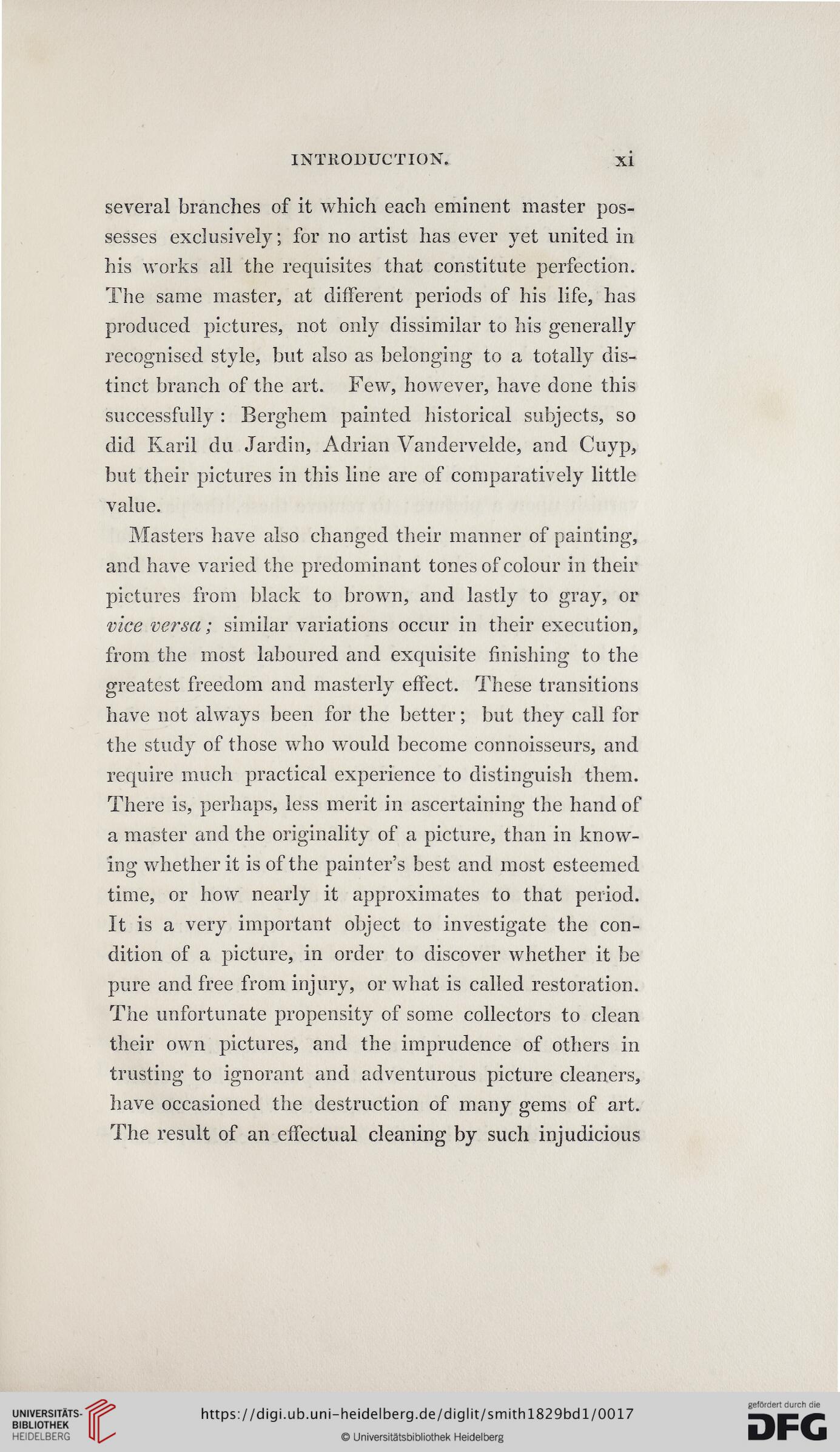INTRODUCTION.
xi
several branches of it which each eminent master pos-
sesses exclusively; for no artist has ever yet united in
his works all the requisites that constitute perfection.
The same master, at different periods of his life, has
produced pictures, not only dissimilar to his generally
recognised style, but also as belonging to a totally dis-
tinct branch of the art. Few, however, have done this
successfully : Berghem painted historical subjects, so
did Karil du Jardin, Adrian Vandervelde, and Cuyp,
but their pictures in this line are of comparatively little
value.
Masters have also changed their manner of painting,
and have varied the predominant tones of colour in their
pictures from black to brown, and lastly to gray, or
vice versa; similar variations occur in their execution,
from the most laboured and exquisite finishing to the
greatest freedom and masterly effect. These transitions
have not always been for the better; but they call for
the study of those who would become connoisseurs, and
require much practical experience to distinguish them.
There is, perhaps, less merit in ascertaining the hand of
a master and the originality of a picture, than in know-
ing whether it is of the painter’s best and most esteemed
time, or how nearly it approximates to that period.
It is a very important object to investigate the con-
dition of a picture, in order to discover whether it be
pure and free from injury, or what is called restoration.
The unfortunate propensity of some collectors to clean
their own pictures, and the imprudence of others in
trusting to ignorant and adventurous picture cleaners,
have occasioned the destruction of many gems of art.
The result of an effectual cleaning by such injudicious
xi
several branches of it which each eminent master pos-
sesses exclusively; for no artist has ever yet united in
his works all the requisites that constitute perfection.
The same master, at different periods of his life, has
produced pictures, not only dissimilar to his generally
recognised style, but also as belonging to a totally dis-
tinct branch of the art. Few, however, have done this
successfully : Berghem painted historical subjects, so
did Karil du Jardin, Adrian Vandervelde, and Cuyp,
but their pictures in this line are of comparatively little
value.
Masters have also changed their manner of painting,
and have varied the predominant tones of colour in their
pictures from black to brown, and lastly to gray, or
vice versa; similar variations occur in their execution,
from the most laboured and exquisite finishing to the
greatest freedom and masterly effect. These transitions
have not always been for the better; but they call for
the study of those who would become connoisseurs, and
require much practical experience to distinguish them.
There is, perhaps, less merit in ascertaining the hand of
a master and the originality of a picture, than in know-
ing whether it is of the painter’s best and most esteemed
time, or how nearly it approximates to that period.
It is a very important object to investigate the con-
dition of a picture, in order to discover whether it be
pure and free from injury, or what is called restoration.
The unfortunate propensity of some collectors to clean
their own pictures, and the imprudence of others in
trusting to ignorant and adventurous picture cleaners,
have occasioned the destruction of many gems of art.
The result of an effectual cleaning by such injudicious




